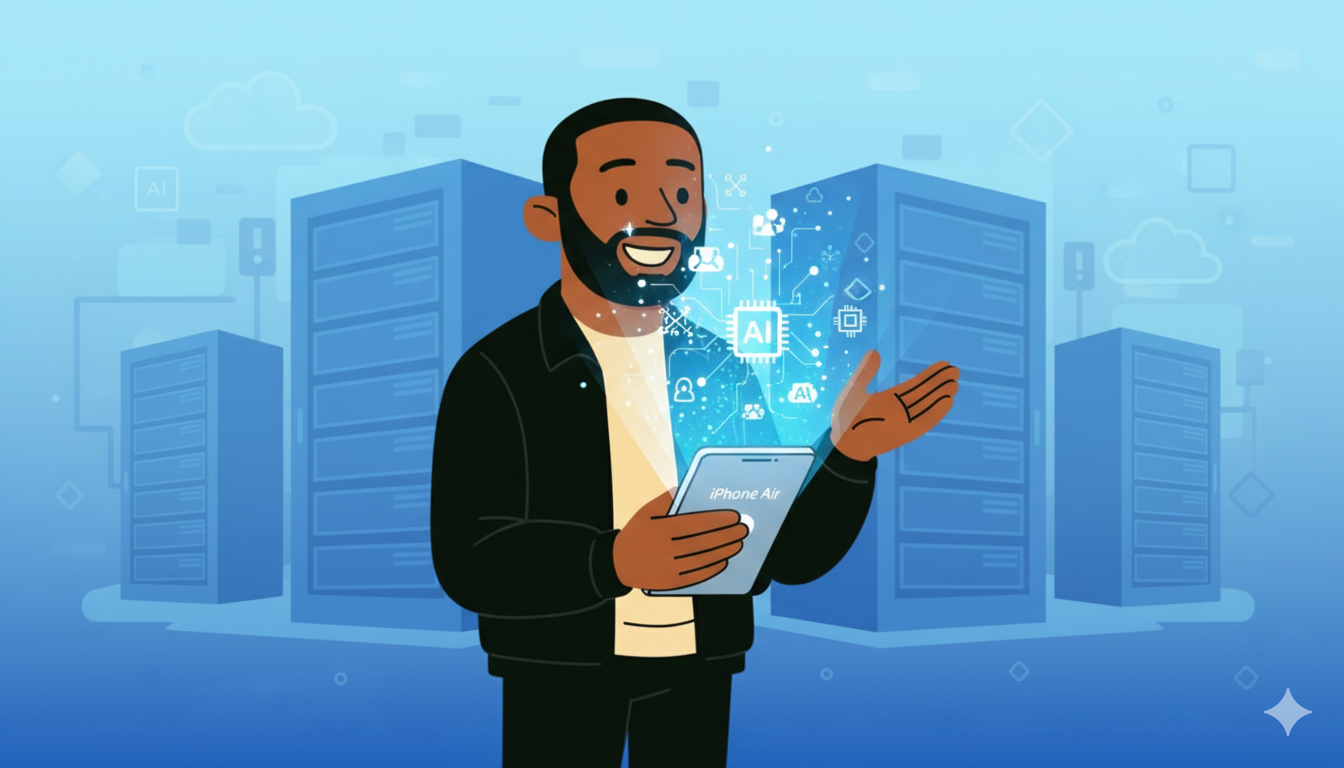The AI Infrastructure Reality Check: What Oracle's $250B Surge and Custom Chips Tell Us About Tech's Future
Earlier this month, we witnessed one of those watershed moments in tech that historians will mark as a turning point. Oracle's stock exploded 36% in a single day, adding roughly $250 billion in market value – the kind of number that used to seem impossible outside of cryptocurrency fever dreams. But this wasn't speculation or hype. This was the market finally understanding what many of us in tech have been sensing: the AI infrastructure wars are real, and they're reshaping everything we thought we knew about enterprise technology.
When the Market Speaks This Loudly, We Should Listen
I've been watching Oracle for years, often dismissing it as a legacy database company struggling to stay relevant in the cloud era. That bias almost made me miss what's actually happening here. Oracle now projects its cloud infrastructure revenue will climb from $18 billion this year to $144 billion by 2030 – a growth trajectory that would make even the most optimistic startup founder blush.
But here's what struck me most about Oracle CEO Safra Catz's comments: "We signed four multibillion-dollar contracts with three different customers in Q1." This isn't about consumer adoption or viral marketing. This is enterprise decision-makers with massive budgets saying "we need this infrastructure, and we need it now."
The Efficiency Revolution I Didn't See Coming
While Oracle was grabbing headlines earlier this month, Apple quietly announced something that might be even more significant for the future of AI: the iPhone Air, at just 5.6mm thick, powered by the new A19 Pro chip designed specifically for on-device AI processing. As someone who's watched the industry oscillate between centralized and distributed computing for decades, this feels like a fundamental shift.
The promise of running sophisticated AI models locally, without constantly pinging cloud servers, addresses real problems I've encountered in my own work. Latency issues, privacy concerns, and the simple frustration of losing connectivity right when you need an AI assistant most – these aren't just technical challenges, they're user experience barriers that limit AI's practical utility.
The Quiet Revolution: Custom Chips and Strategic Independence
Perhaps the most fascinating development is happening behind the scenes: OpenAI is partnering with Broadcom to develop custom AI chips, with shipments beginning in 2026. This represents a seismic shift from the current model where Nvidia essentially controls the AI hardware ecosystem.
I've worked in enough enterprise environments to understand the strategic implications here. When you're building the future of AI, do you really want to be dependent on a single supplier? The reported $10 billion order suggests OpenAI is making a massive bet on semiconductor independence, following the playbook that Apple pioneered with its transition from Intel chips to its own silicon.
What This Means for the Rest of Us
These developments point to three trends that will shape how we work with AI in the coming years:
Infrastructure is becoming the new moat. Companies that control their AI infrastructure stack – from chips to data centers to software – will have significant advantages. This isn't just about cost; it's about the ability to optimize performance for specific use cases and maintain control over their technological destiny.
On-device AI is getting serious. The iPhone Air represents more than just a thin phone. It's a statement that AI processing doesn't always need to happen in massive data centers. For those of us building AI-powered applications, this opens up new possibilities for responsive, private, and reliable AI experiences.
The AI supply chain is diversifying. Nvidia's dominance, while impressive, was never going to last forever. The emergence of custom chips from major players suggests we're entering a more competitive and hopefully more innovative phase of AI hardware development.
The Human Element in an Infrastructure Story
Here's what makes me optimistic about these developments: they're solving real human problems, not just technical ones. Faster, more efficient AI that works locally means better privacy. Diversified supply chains mean more innovation and potentially lower costs. Infrastructure that can scale efficiently means AI capabilities can reach smaller companies and individual developers, not just tech giants.
But I'd be lying if I said I wasn't also concerned. The scale of investment required to compete in AI infrastructure is creating new barriers to entry. When a single hardware order approaches $10 billion, we're operating in a realm where only the largest companies can play. This concentration of power in AI infrastructure deserves our attention and probably some regulatory oversight.
Looking Forward: Questions Worth Asking
As I process these developments, several questions keep coming up:
Will the push toward custom chips lead to a more fragmented AI ecosystem, or will it ultimately benefit developers through better competition and innovation? How quickly can on-device AI capabilities actually improve user experiences in meaningful ways? And perhaps most importantly, how do we ensure that these infrastructure advances translate into AI tools that actually help people do better work and live better lives?
The Reality Check
Oracle's massive surge isn't just about one company's success – it's a market recognition that AI infrastructure is becoming as critical as the internet itself was in the 1990s. The companies building the pipes, processing power, and platforms that enable AI are positioning themselves at the center of the next phase of technological evolution.
For those of us working in tech, this infrastructure shift creates both opportunities and challenges. We're entering an era where understanding the AI stack – from chips to clouds to edge devices – may be as important as understanding software development itself.
The transformation happening in AI infrastructure isn't just changing how computers work. It's changing how we work, how we solve problems, and how we think about the role of technology in our daily lives. These recent developments might have been about quarterly earnings and product launches, but they're really about the foundation being laid for the next decade of human-AI collaboration.
What trends are you seeing in AI infrastructure at your organization? How do you think the shift toward custom chips and on-device processing will impact your work? I'd love to hear your perspective – share your thoughts and experiences in the comments below.
Jeremy Mckellar is a Connector, Creative, and Tech Futurist focused on making technology meaningful and accessible. Connect with him on LinkedIn or follow his thoughts on technology at JeremyMckellar.com.
AI Collaboration Disclosure: This article was developed in collaboration with AI as a thinking partner to help synthesize and organize my thoughts. I believe AI tools can amplify our human insights when used thoughtfully – consider exploring how these tools might enhance your own content creation and strategic thinking.

